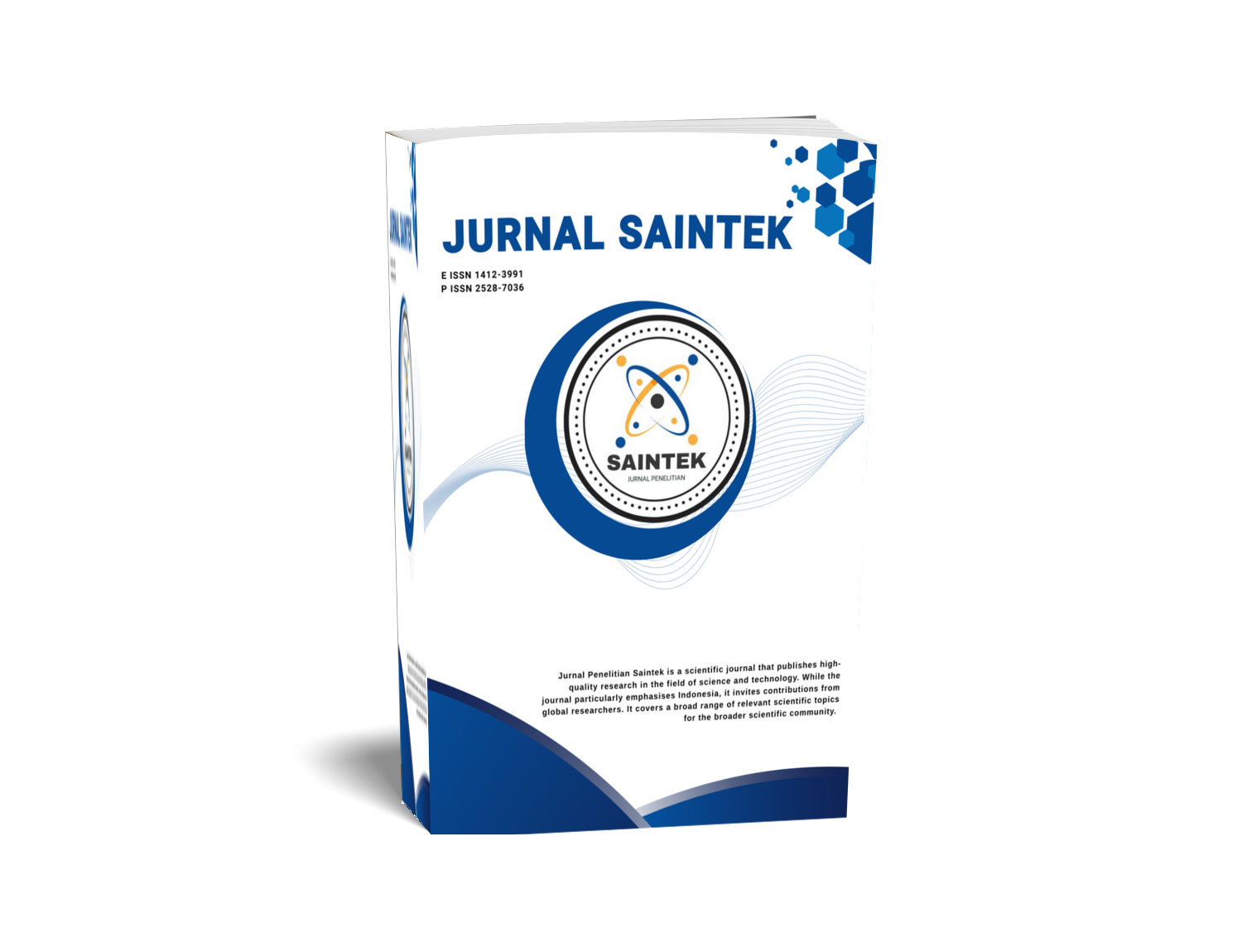DETERMINING THE RESULTS OF RADIOISOTOPE PRODUCTIN DECY-13 CYCLOTRON FACILITY
DOI:
https://doi.org/10.21831/jps.v21i1.10555Keywords:
Cyclotron, proton, radioisotope yield calculation, fl uorine-18, commissioningAbstract
This study was aimed at determining the results of radioisotope product in particular radioisotope of fl uorine-18 at 13 MeV proton cyclotron facility. The calculation used a formulae of thick target yield on the nuclear reaction of 18 O(p,n) 18 F. This calculation is intended to ensure that the formulae and parameters used quite feasible for commissioning DECY-13 cyclotron. The calculation result has been compared with the radioisotope results of the cyclotrons in Dharmais and MRCCC Jakarta hospitals as well as the standards of the IAEA. The difference of results of calculation with comparison data is not more than 5%, which means that the calculation formulae is quite feasible for cyclotron commissioning. The calculation of fl uorine-18 product using the formulae is 1223 mCi at 30 uA proton beam current of cyclotron operation and 40 minutes of irradiation.
References
Celler, A., Hou, X., Benard, F., & Ruth, T. J. (2011). Theoretical modeling of yields for proton induced reactions on natural and enriched molybdenum targets. Phys Med Biol, 56, 5469-5484.
Hess, E., Takács, S., Scholten, B., Tárkányi, F., Coenen, H. H., & Qaim, S. M. (2001). Excitation function of the 18 O(p,n) F nuclear reaction from threshold up to30 MeV. Radiochimica Acta, 89(6), 357-362. Diunduh dari https://www. researchgate.net/publication/. International Atomic Energy Agency [IAEA]. (2012). Cyclotron produced radionuclides: Guidance on facility design and production of [F] FDG. IAEA Radioisotopes and Radiopharmaceuticals Series No. 3 OSE (FDG), IAEA.18
International Atomic Energy Agency [IAEA. (2016). Experimental nuclear reaction data (EXFOR) database version of May 05, 2016. Nuclear Data Center IAEA, Software Version of 2016.05.10. ISOFLEX. (2016). Isotopes for science, medicine and industry. Diunduh dari http://www.isofl ex.com/isotopes/. Jensen, M. (2012). Particle Accelerators for PET Radionuclides. Nuclear Medicine Review, 15(C), 9-12.
Kusuma, A., Tuloh , R.A., & Suryanto, H. (2012, November). Pengoperasian cyclone 18/9 untuk Produksi radionuklida f dalam penyiapan radiofarmaka FDG di Rumah Sakit MRCCC Jakarta. Prosiding Pertemuan dan Presentasi Ilmiah Tek-nologi Akselerator dan Aplikasinya (pp. 202 212). 18
Lepera, C. G. (2016). Cyclotron productionof PET radionuclides selection and location. Cyclotope and Experimental 18 Diagnostic Imaging, The University of Texas MD Anderson Cancer Center Houston, TX. www.aapm.org/ meetings/08SS.
Listiawadi F. D., Huda N., Suryanto H., & Parwanto. (2013, Oktober). Produksi radionuklida Fluor-18 untuk penandaan radiofarmaka FDG menggunakan siklotron eclipse di Rumah Sakit Kanker Darmais. Prosiding Pertemuan dan Presentasi Ilmiah Teknologi Akselerator dan Aplikasinya (p. 61). 18
Institute of Standards and Technology [NIST]. (2016). Stopping power and range tables for proton. Diunduh dari http://physics.nist.gov/cgi-bin/Star/ap_ table.pl.
Saied, B. M. (2013). Production of medically radionuclide 123I using p, d and He particles induced reactions. International Journal of Physics and Research (IJPR), 3(2), 17-26. 4 Shetty,
H. U., Morse, C. L., Zhang, Y., & Pike, V. W. (2013). Characterization of fast-decaying PET radiotracers solely through LC-MS/MS of constituent radioactive and carrier I.sotopologues. EJNMMI, 3(1), 1-8.
Soppera, N., Dupont, E., & Bossant, M. (2012). JANIS book of proton-induced cross-sections, OECD NEA Data Bank, June 2012.
Downloads
Published
How to Cite
Issue
Section
Citation Check
License
Who Can Submit?
Any individual may submit an original manuscript for consideration for publication in Jurnal Penelitian Saintek as long as they hold the copyright to the work or are authorized by the copyright owner(s) to submit it. Authors retain initial ownership of the copyrights to their works prior to publication, except in cases where, as a condition of employment, they have agreed to transfer copyright to their employer.
User Rights
Jurnal Penelitian Saintek is an Open Access journal. Users are granted the right to read, download, copy, distribute, print, search, or link to the full texts of articles, provided they comply with the conditions of the Creative Commons Attribution-ShareAlike License 4.0 (CC BY-SA 4.0).
https://creativecommons.org/licenses/by-sa/4.0/
Author Rights
Authors retains copyrights.
Jurnal Penelitian Saintek by http://journal.uny.ac.id/index.php/saintek is licensed under a Creative Commons Attribution-ShareAlike 4.0 International License.









